Potrebujeme váš súhlas na využitie jednotlivých dát, aby sa vám okrem iného mohli ukazovať informácie týkajúce sa vašich záujmov. Súhlas udelíte kliknutím na tlačidlo „OK“.
ASTM D7807-12
Standard Test Method for Determination of Boiling Range Distribution of Hydrocarbon and Sulfur Components of Petroleum Distillates by Gas Chromatography and Chemiluminescence Detection
Automaticky preložený názov:
Štandardná skúšobná metóda pre stanovenie rozmedzie varu Distribúcia uhľovodíkových a síry Komponenty ropných destilátov plynovou chromatografiou a chemiluminiscenčná detekcia
NORMA vydaná dňa 15.12.2012
Informácie o norme:
Označenie normy: ASTM D7807-12
Poznámka: NEPLATNÁ
Dátum vydania normy: 15.12.2012
Kód tovaru: NS-39141
Počet strán: 14
Približná hmotnosť: 42 g (0.09 libier)
Krajina: Americká technická norma
Kategória: Technické normy ASTM
Kategórie - podobné normy:
Anotácia textu normy ASTM D7807-12 :
Keywords:
boiling range distribution, distillation, gas chromatography, petroleum , simulated distillation, sulfur chemiluminescence detection, sulfur distribution, ICS Number Code 75.080 (Petroleum products in general)
Doplňujúce informácie
| Significance and Use | ||||||||||||||||||||||||||||||||||||||||||||
|
5.1 The boiling range distribution of light and medium petroleum distillate fractions provides an insight into the composition of feed stocks and products related to petroleum refining processes. This gas chromatographic determination of boiling range can be used to replace conventional distillation methods for control of refining operations. This test method can be used for product specification testing with the mutual agreement of interested parties. 5.2 This test method extends the scope of Test Method D2887 (538°C) boiling range determination by gas chromatography to include sulfur boiling range distribution in the petroleum distillate fractions. Knowledge of the amount of sulfur and its distribution in hydrocarbons is economically important in determining product value and in determining how best to process or refine intermediate products. Sulfur compounds are known to affect numerous properties of petroleum and petrochemical products. The corrosion of metals and poisoning of catalysts is of particular concern. In addition, the content of sulfur in various refined products may be subject to governmental regulations. Test Methods, such as, D2622, D3120, D5504 and D5623, are available to determine total sulfur content or content of individual sulfur compounds in petroleum and petroleum products. Test Methods, such as, D86, D1160, D2887, D3710, D2892, are also available to determine the hydrocarbon boiling ranges of such samples. The gas chromatographic determination of the sulfur boiling range assists in process development, in treatment and control of refining operations and is useful for assessing product quality. This determination produces detailed information about the sulfur distribution in a sample that cannot be obtained by either total sulfur analysis or analysis of sulfur in discreet distillation cuts. 5.2.1 The hydrocarbon boiling range distributions obtained by Test Method D2887 are theoretically equivalent to those obtained by true boiling point (TBP) distillation (see Test Method D2892). They are not equivalent to results from low efficiency distillation such as those obtained with Test Method D86 or D1160. |
||||||||||||||||||||||||||||||||||||||||||||
| 1. Scope | ||||||||||||||||||||||||||||||||||||||||||||
|
1.1 This test method covers the determination of the boiling range distribution of petroleum products. The test method is applicable to petroleum products and fractions having a final boiling point of 538°C (1000°F) or lower at atmospheric pressure as measured by this test method. This test method is limited to samples having a boiling range greater than 55°C (100°F), and having a vapor pressure sufficiently low to permit sampling at ambient temperature. 1.1.1 The applicable sulfur concentration range will vary to some extent depending on the boiling point distribution of the sample and the instrumentation used; however, in most cases, the test method is applicable to samples containing levels of sulfur above 10 mg/kg. 1.2 This test method requires the use of both FID and SCD for detection. The hydrocarbon simulated distillation data obtained from the FID signal should be performed according to Test Method D2887. 1.3 The test method is not applicable for analysis of petroleum distillates containing low molecular weight components (for example, naphthas, reformates, gasolines, crude oils). Materials containing heterogeneous components (for example, alcohols, ethers, acids or esters) or residue are not to be analyzed by this test method. See Test Methods D3710, D7096, D5307, D7169, or D7500. 1.4 This test method does not purport to identify all sulfur species in a sample. The detector response to sulfur is equimolar for all sulfur compounds within the scope (1.4.1 This test method uses the principles of simulated distillation methodology. 1.5 The values stated in SI units are to be regarded as standard. The values given in parentheses are for information only. 1.6 This standard does not purport to address all of the safety concerns, if any, associated with its use. It is the responsibility of the user of this standard to establish appropriate safety and health practices and determine the applicability of regulatory limitations prior to use. |
||||||||||||||||||||||||||||||||||||||||||||
| 2. Referenced Documents | ||||||||||||||||||||||||||||||||||||||||||||
|
Podobné normy:
Historická
1.4.2012
Historická
1.4.2012
Historická
1.4.2012
Historická
1.6.2014
Historická
1.6.2013
Historická
1.6.2014


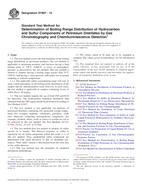
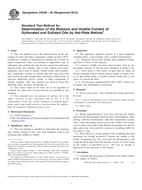 ASTM D5349-95(2012)..
ASTM D5349-95(2012)..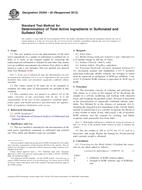 ASTM D5354-95(2012)..
ASTM D5354-95(2012)..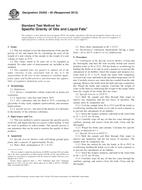 ASTM D5355-95(2012)..
ASTM D5355-95(2012)..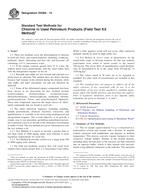 ASTM D5384-14
ASTM D5384-14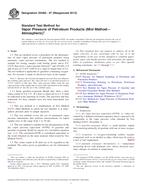 ASTM D5482-07(2013)..
ASTM D5482-07(2013)..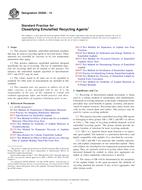 ASTM D5505-14
ASTM D5505-14
 Cookies
Cookies
